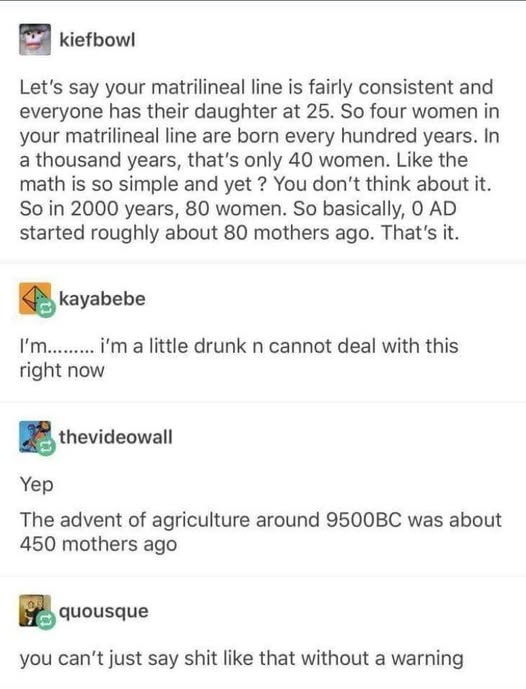this post was submitted on 23 Jan 2025
980 points (98.6% liked)
Science Memes
14594 readers
585 users here now
Welcome to c/science_memes @ Mander.xyz!
A place for majestic STEMLORD peacocking, as well as memes about the realities of working in a lab.

Rules
- Don't throw mud. Behave like an intellectual and remember the human.
- Keep it rooted (on topic).
- No spam.
- Infographics welcome, get schooled.
This is a science community. We use the Dawkins definition of meme.
Research Committee
Other Mander Communities
Science and Research
Biology and Life Sciences
- [email protected]
- [email protected]
- [email protected]
- [email protected]
- [email protected]
- [email protected]
- [email protected]
- [email protected]
- [email protected]
- [email protected]
- [email protected]
- [email protected]
- [email protected]
- [email protected]
- [email protected]
- [email protected]
- [email protected]
- [email protected]
- [email protected]
- [email protected]
- [email protected]
- [email protected]
- [email protected]
- [email protected]
- !reptiles and [email protected]
Physical Sciences
- [email protected]
- [email protected]
- [email protected]
- [email protected]
- [email protected]
- [email protected]
- [email protected]
- [email protected]
- [email protected]
Humanities and Social Sciences
Practical and Applied Sciences
- !exercise-and [email protected]
- [email protected]
- !self [email protected]
- [email protected]
- [email protected]
- [email protected]
Memes
Miscellaneous
founded 2 years ago
MODERATORS
you are viewing a single comment's thread
view the rest of the comments
view the rest of the comments

First births yes, but what about average age? Our ancestors may have been second born, third born, eighth born etc
High maternal mortality meant that having more than about 7 children per woman was rare. Total fertility rate was about 4.5 to 7 in the pre modern era. Population growth was low due to infant and early childhood mortality though.
If you start having children at age 12, you can have a child every year and reach 7 children by age 20. Without contraceptives, people weren’t having such large multi-year gaps between children like we do now.
Based on my own genealogical research, the trend I typically saw was 6-8 kids, between 18 and early 30s, about 20% of which died. Plus consider that some of those will be sons, and some daughters never become mothers, 25 is pretty spot on for the average age for a mother-to-mother generational gap.
Yes abd the field of genealogy, the size of a generation is given as 25 years. I believe specialists of genealogy who had to defined this metric did think about the way couple had kids in the past.